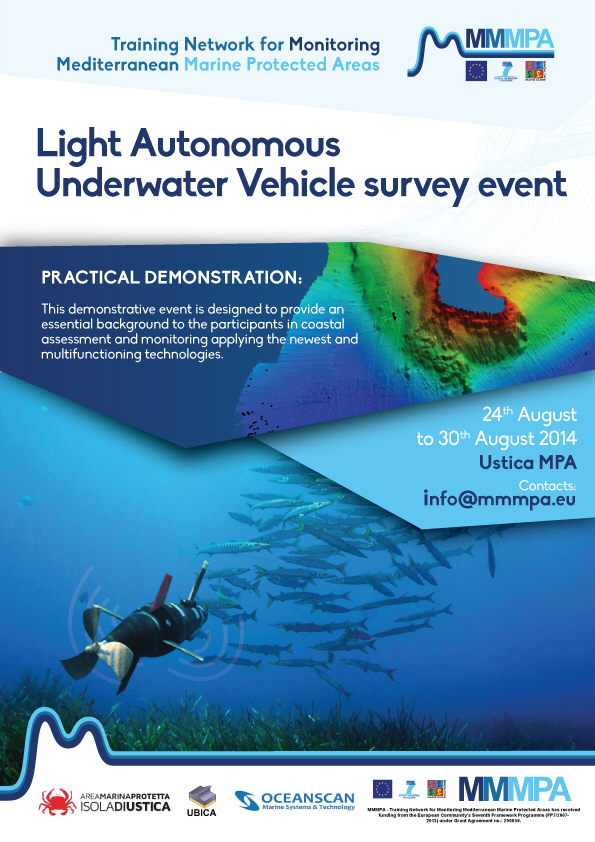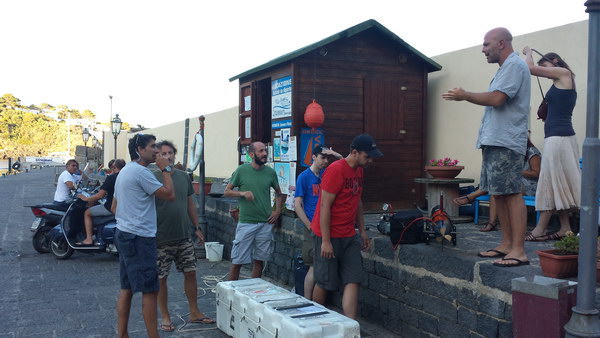|
|
At a European level the Marine Strategy Framework Directive (MSFD) requires an initial assessment of the current environmental status of European Union member's marine waters. Effective implementation of these policies requires a sound understanding of the extent and distribution of benthic biological assemblages as a starting point. Bathymetry is the study and mapping of seafloor topography. It involves obtaining measurements of the depth of the ocean and is equivalent to mapping topography on land. The MMMPA training event "Light Autonomous underwater vehicle survey event", carried out in Ustica MPA during the 24th - 30th of August 2014, provided a great opportunity to learn the scientific, technological and operational aspects of seafloor surveying conducted with AUV technologies. The Light Autonomous Underwater Vehicle (LAUV) used in this experiment, was initially developed by the Underwater Systems and Technology Laboratory from Porto University (www.lsts.pt) and is commercially available trough OceanScan-MST (www.oceanscan-mst.com). Alexandre Sousa (from OceanScan-MST), Paulo Dias and Ricardo Martins (from Porto University) were the team responsible of the operation of the LAUV system during this experiment.
The LAUV was used to explore the Ustica seafloor, for specified inspection areas that were previously stablished in the sampling design and with the collaboration of Dr. Veerle Huvenne and Dr. Claudio Lo Iacono from the National Oceanography Centre in Southampton, UK. We spent several days working with seafloor maps and preparing the survey planning and analysis. With the help and support of OceanScan team and the National Oceanography Centre colleagues, we programmed the LAUV with target profiles of specifically selected areas around the island. Finally we conducted scientific surveys during several days aboard the Ustica MPA boat gathering the data, discussing about theoretical concepts and hands-on using the LAUV while we had the chance to enjoy the wonderful seascape view of Ustica Island and we were really happy to see results coming out!
We will use these high-resolution information to produce maps that charts the contours, depths and hardness of the ocean floor in the study area along with data we will gather in the field by SCUBA divers (call ground truthing) to create maps of the habitats of Ustica ocean floor; these data will be combined with other geo-datasets to create a Geographic Information Systems (GIS) of the area that may be in critical need of shelter or special environmental management protection. We hope these data will provide the MPA with a cost effective innovative methodology to map and monitoring their marine benthic habitats. Thanks again to the collaborators for sharing their work with us! Reported by Paula Zapata
|
|
||
|
|
||||






_resize.jpg)

_resize.jpg)